How to sell on Amazon internationally
As many countries still face uncertainty over the coronavirus pandemic, physical stores remain places to be avoided. In an attempt to cling to normalcy, consumers are flocking to eCommerce platforms like Amazon and shopping online like never before.
The pandemic – as destructive as it has been – has also been responsible for accelerating the shift towards online shopping. New behaviours mean new opportunities. For professional sellers, this is an excellent time to expand their stores on Amazon internationally.
Start selling internationally on Amazon is an enriching task, but it can be time-intensive. This article covers everything you need to know to start your global journey, from the types of products to legal, tax and regulatory advice.
What is Amazon Global Selling?
Amazon Global Selling (AGS) is an Amazon programme that enables you to sell your products on all their global marketplaces. To access the AGS program, you have to register your Seller Central account in the Amazon Marketplace(s) of choice and link your accounts to multiple regions. But the real steps begin with choosing the marketplaces where you'll sell.
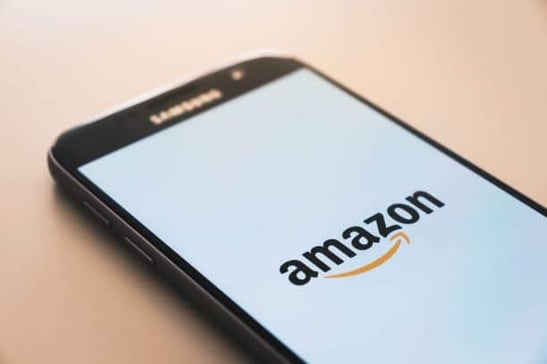
How to start selling on Amazon Internationally?
Decide where to sell
Amazon Global Marketplaces are continuously expanding to new countries. Currently, you can sell on Amazon internationally by using the following dedicated websites:
- United Kingdom, Germany, France, Italy, Netherlands
- Canada, United States, Mexico
- United Arab Emirates
- Turkey
- Brazil
- Australia
- India
- Singapore
- Japan
Is there a product fit?
It takes a few steps to check if your product has the potentiality to succeed in the new market. Start your international expansion project by answering these questions:
- Are your products appropriate for the new market?
- Is there a lot of demand for your product?
- Are there many competitors in the market?
It's crucial to understand about the product fit before launching your international Amazon store.
Product standards differ across countries. For example, hair dryers operating on 110-220 V that are only equipped with two-prong electrical chargers may not be appropriate for the UK. Bed sheets that are sold in Australia would fail in the US because the standard mattress sizes are different.
The success rate of a product may vary from market to market. Don't forget to consider factors such as culture, climate, and demographics.
If you are specifically sourcing products for new markets, you're able to ensure market fit. Keep reading to find ways to source the right products for the right markets.
Understand the taxes and product regulations with Amazon Global Selling
For all marketplaces, you will need to consider legal and industry requirements about the following topics:
- Intellectual property rights
- Product safety
- Environmental, health and product compliance
- Marking and labels
In the EU, for example, CE is a mandatory conformance mark on medical devices, toys, personal protective equipment and so on.
Taxes (like tariffs) and the cost of ensuring you meet the regulations (like product compliance) vary from market to market. They may affect your profitability, and for this reason, this is another early consideration you need to make when planning to sell on Amazon internationally.
Here are some of the legal procedures and regulations that you need to meet when listing your products on Amazon international marketplaces. Remember that this information does not replace consulting professional advice.
- United States Tax and Regulatory Considerations
- Canada tax and regulatory considerations
- Europe Tax and Regulatory Considerations
- Japan Tax and Regulatory Considerations
- Mexico tax and regulatory considerations
- New Zealand Goods and Services Tax (GST)
- Russia Value Added Tax (VAT)
- Taiwan Value Added Tax (VAT)
- International Trade Laws
- Japanese Consumption Tax
Understanding what to sell
Finding successful products to sell
If you base your business model on sourcing products to sell, there are several ways of finding niches to sell in each country or region. There are tools with large Product Databases that allow you to scan through Amazon products by filtering key metrics such as price, demand, rating, estimated sales, seasonality, dimensions, weight and more.
These are some of the tools you can use to find this information:
Sifting through all this data can be overwhelming. According to former Amazon.de account executive Kai Klement - and Seller with over 500.000 product sales on Amazon - these are some of the product attributes that you should aim for when selling internationally:
1. Retail price between $25 – $50 USD
This price range ensures you cover direct costs like Amazon fees, production and advertising costs. A $50 USD upper limit is suggested because that is where conversion rates usually start to drop on Amazon.
2. High demand all year round
Look for products that are not seasonal and that are in high demand. Google Trends - as well as some of the Amazon product research tools mentioned above - will help you spot seasonality. Our tip is for you to look for categories in which the top 10 sellers are selling an average of 10 units per day.
3. Low competition
Low competition doesn't necessarily mean fewer competitors. There can be a handful of competitors sharing the same amount of sales. Avoid strong brands or monopolies – both factors make it difficult to penetrate the category.
4. No bigger than a shoebox and lightweight
Look for a product that won’t be too expensive to ship, i.e., a light, small object that buyers can import easily and quickly via Air.
5. Simple to manufacture and can be improved
Avoid glass, which breaks easily, or electronics if you can. Additionally, you may want to improve the product. Make it your own and differentiate it. Use the feedback from your competitor's product reviews to create a better product.
How to establish the price to sell on Amazon internationally
Many factors might affect your profit margin in international marketplaces. These are some of the elements you need to take in consideration.
- International shipping costs and return shipping if you are fulfilling orders yourself.
- Fulfilment by Amazon (FBA) shipping costs and Amazon FBA Fees.
- Country specific taxes and import tariffs.
- Any new payment fees from receiving foreign currency?
- New Amazon account subscription
- Advertising
- Customer Return Fees (Amazon keeps 20% of the original commission as a return fee)
There are also category-specific costs which you need to consider. For example, if you sell clothing, Amazon will charge you FBA fees related to customer return shipping costs. See all fees by marketplace and category here:
These direct and indirect costs will help you set your price floor – the price at which you're not losing money. But, naturally, you want to do more than that. You want to develop a sustainable international business.
So as you try to establish your ideal price – one that allows you to generate profitable sales – remember that you need to get your products ranked on page one of Amazon search results for your main keywords. Take these into consideration when establishing prices in the new market:
- Search the top 3-5 keywords for your product in the new market. What are the prices like on the positions of result pages?
- Establish a price that is within a reasonable range of the prices you found. According to BigCommerce, your upper price floor shouldn't be more than 20% more expensive than the highest price on page one of search results.
Pricing fluctuations
Stable prices help to build customer trust, especially in a new market. But there are some exceptions to update your prices:
- Consider local customs, such as sale seasons and public holidays
- Black Friday, Cyber Monday
- Stock Clearance
- Penetration prices as you launch new products
- Cross-selling promotions
More importantly, never lose sight of your competitors and the general pricing landscape. Follow price fluctuations with price tracking tools such as CamelCamelCamel, Keepa or Penny Parrot.
Pricing rules
Pricing Rules allow you to automate pricing changes to stay on top of the competition. For example, you can create a rule that puts you $0.50 below the Buy Box price at all times or $1.00 above the lowest marketplace price that uses the same fulfilment channel.
Learn more at Amazon's Seller University: Intro to Automate Pricing
Consider the distribution channels
If you use FBA, you can use the same inventory stored in Amazon's fulfilment centres to fulfil orders made through other sales channels, such as your website or other marketplaces.
Now that you will be selling internationally on Amazon and managing various marketplaces, consider using a marketplace management tool. To make things easier, look for platforms that allow you to edit listings, check your seller health, analytics or sales operations.
Acquire overseas customers
Selling on Amazon from another country enables you to use the same promotional tools available on that marketplace, such as Free Delivery, Buy One Get One and Money Off.

Amazon PPC campaigns are a requirement when selling internationally. As a professional seller, you should budget for an Advertising Cost of Sales (ACoS) of approximately 30% of your revenue.
Amazon paid advertising solutions
- Improve product visibility with ads that appear in search results and on product pages.
- Boost brand awareness with ads that appear in search results with your logo and a customised headline.
- Reach relevant audiences on and off Amazon using Sponsored Display ads.
- Create a multi-page Store on Amazon.
Read all about Amazon Ads solutions or, if you're a beginner, read this complete beginner's guide to Advertising on Amazon.
Amazon SEO
Amazon search is the main way that customers use to find products on Amazon. Customers enter keywords and they are matched against the content (title, description, keywords) you provided.
On examining Amazon’s A9 Search Algorithm, the following factors help determine where your product appears in a customer’s search results:
- the degree of text match
- price
- availability
- selection
- sales history
By providing complete information, you increase the chances of customers finding your products faster. Relevant content helps to attract new daily visitors and to win the Buy Box eventually.
That's it for the initial considerations you need to make. After you've decided your 4Ps Strategy, it's time to put it all into action.
Register a Seller Central Account
Start by registering your new Seller Central account in the Amazon Marketplaces of your choice. This is the first step to begin setting up your Global Selling Account.
Be mindful of the marketplace requirements when you are registering a new account to sell on Amazon internationally. For North America, you can create a single account that integrates the United States, Canada and Mexico platforms. Same goes for countries in Europe.
United States
To register to sell on Amazon.com, you will need to provide:
- Valid credit card
- Bank account
- Phone number
- Tax information
- Online interview that will determine whether you will need to complete a W-9 form (as a U.S. taxpayer) or a W-8BEN (as a non-U.S. taxpayer).
You might also be required to provide additional documentation. Visit United States Tax and Regulatory Considerations for more information.
European Marketplaces
To register to sell on Amazon in Europe, you'll need :
- Valid credit card
- Phone number
- Tax information
- Bank account (Registered in the UK, the US or Eurozone countries)
- VAT number (although you can complete your registration without a VAT number, you will be required to provide one eventually to sell on Amazon in Europe). Visit Europe Tax and Regulatory Considerations and VAT Registration in EU.
The Amazon European Marketplaces account
In Europe, Amazon has unified its five marketplaces. You can manage your European business from a single seller account. However, you will still need to satisfy the Amazon seller rules applicable to the countries where you're selling. Please note that creating offers in the first European marketplace does not automatically populate offers in the others.
Are you looking to register an Amazon account in other marketplaces? See here the requirements for Canada, Japan, Singapore, Australia, the UAE and Turkey.
List your products
If you have fewer than 100 products, Amazon's Add a Product listing tool will suffice. But, this means that you will add each product at a time. If your inventory is more extensive or you have a Professional Account, you're able to bulk upload a file with your inventory data.
Simplify and automate your Amazon international listings with the Build International Listings feature. The feature enables you to:
- Sync listings instantly between your native and target marketplace(s).
- Automatically reflect any price modifications you make while also adjusting according to exchange rate fluctuations.
See the Listing Creation for Global Accounts for more details.
A+ Content
Amazon A+ Content is a must-use tool to sell internationally on Amazon. A+ is available to brand owners and enables them to create enhanced descriptions of branded ASINs. As a brand, registered on Amazon Brand Registry, you can add detailed descriptions, HD videos, comparison charts of competitors, high-quality images, custom copy (e.g. brand stories).
This feature creates a better shopping experience and helps to:
- Increase customer trust
- Boost conversion rates
- Improve ranking on Amazon search results
- Increase product sales by 3 to 10% on average (according to Amazon).
And it's been associated with a reduced return rate, as customers get a more detailed description of what they're buying. Lastly, there is no extra cost associated, apart from content production.
Ship internationally
There are two options of shipping when selling on Amazon internationally.
- Fulfilment by Sellers
- Fulfilment by Amazon.
Fulfilment by Seller means that you take care of everything. You will choose the carrier and manage customer expectations. Not doing this adequately, will impact your Seller Health. You should always keep in mind customs duties and taxes.
Fulfilment by Amazon strips most of the burden of fulfilling orders, and this should be your choice when planning to sell internationally. With Amazon FBA, you'll send products into the countries where the Amazon fulfilment centres are located. The one exception is in Europe. Once you store your products in one of Europe's fulfilment centres (UK, Germany, Italy, France, Spain), you don't need to import them into another European country where an order has been placed.
Customer Support and Returns
When you choose to fulfil customer orders yourself, you will be picking, packing and shipping to customers. You will also have to handle Returns yourself. On the other hand, when you use FBA, Amazon will provide 24-hour support to your clients on your behalf with a local address to handle returns.
Start selling on Amazon Internationally
It is too early to say whether the pandemic precipitated a level of online consumption that will last only as long as the coronavirus, or if it has marked a permanent shift where online will be the preferred channel. David Kahan, US CEO of Birkenstock seems to think the latter:
“[...] when this is over, the grocery stores go back to just being grocery stores. But if you didn’t have the Amazon app before, you do now.” Either way, the opportunity to expand worldwide remains and will remain for an indefinite period. If you were waiting for the right time to expand your store, this may be your best opportunity yet.
Read more about Amazon FBA and how to start selling on Amazon UK (and the rest of Europe).



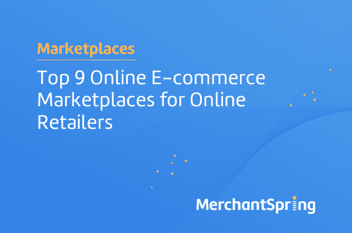
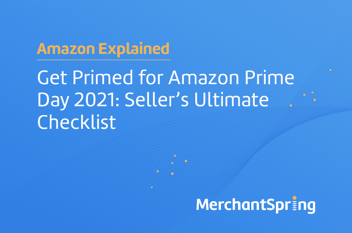
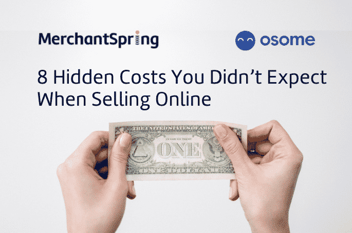

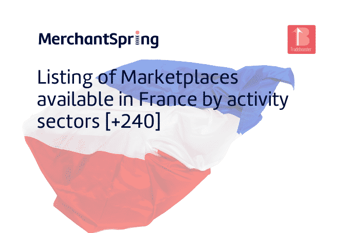
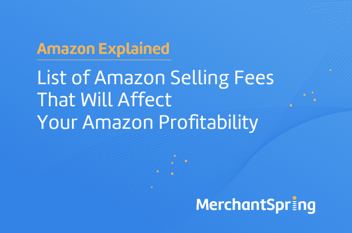

Add a Comment